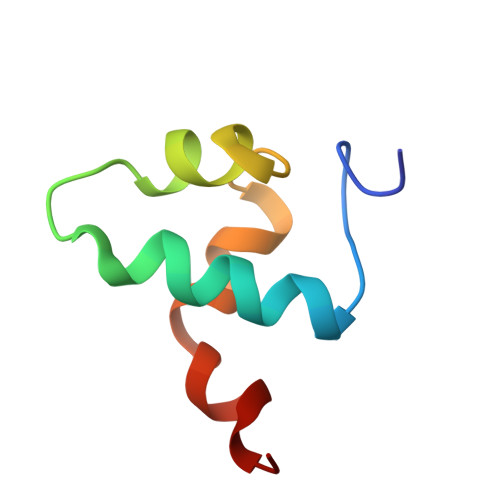A helix-turn-helix structure unit in human centromere protein B (CENP-B).
Iwahara, J., Kigawa, T., Kitagawa, K., Masumoto, H., Okazaki, T., Yokoyama, S.(1998) EMBO J 17: 827-837
- PubMed: 9451007
- DOI: https://doi.org/10.1093/emboj/17.3.827
- Primary Citation of Related Structures:
1BW6 - PubMed Abstract:
CENP-B has been suggested to organize arrays of centromere satellite DNA into a higher order structure which then directs centromere formation and kinetochore assembly in mammalian chromosomes. The N-terminal portion of CENP-B is a 15 kDa DNA binding domain (DBD) consisting of two repeating units, RP1 and RP2. The DBD specifically binds to the CENP-B box sequence (17 bp) in centromere DNA. We determined the solution structure of human CENP-B DBD RP1 by multi-dimensional 1H, 13C and 15N NMR methods. The CENP-B DBD RP1 structure consists of four helices and has a helix-turn-helix structure. The overall folding is similar to those of some other eukaryotic DBDs, although significant sequence homology with these proteins was not found. The DBD of yeast RAP1, a telomere binding protein, is most similar to CENP-B DBD RP1. We studied the interaction between CENP-B DBD RP1 and the CENP-B box by the use of NMR chemical shift perturbation. The results suggest that CENP-B DBD RP1 interacts with one of the essential regions of the CENP-B box DNA, mainly at the N-terminal basic region, the N-terminal portion of helix 2 and helix 3.
Organizational Affiliation:
Department of Biophysics and Biochemistry, Graduate School of Science, University of Tokyo, Bunkyo-ku, Tokyo 113.

















